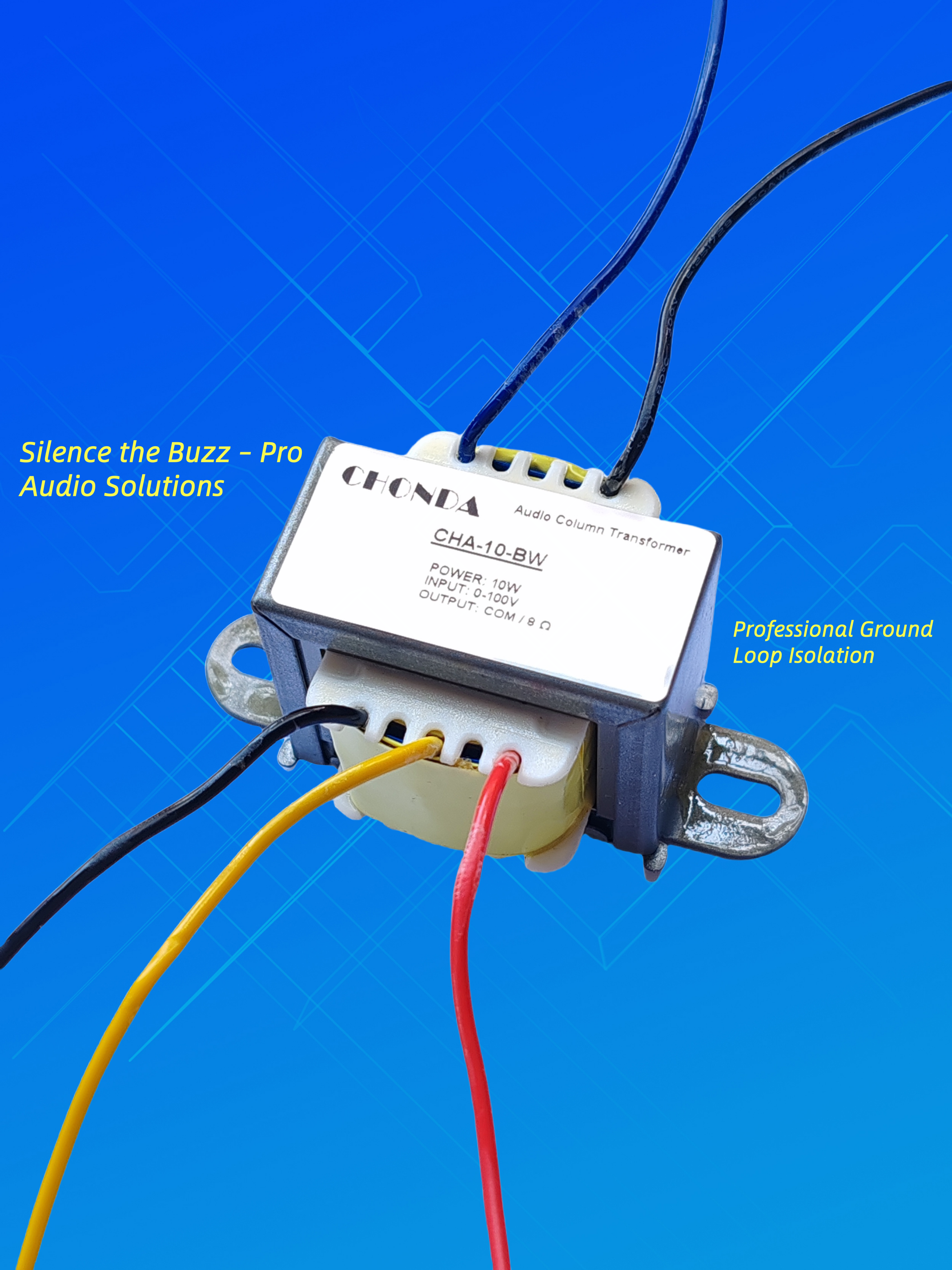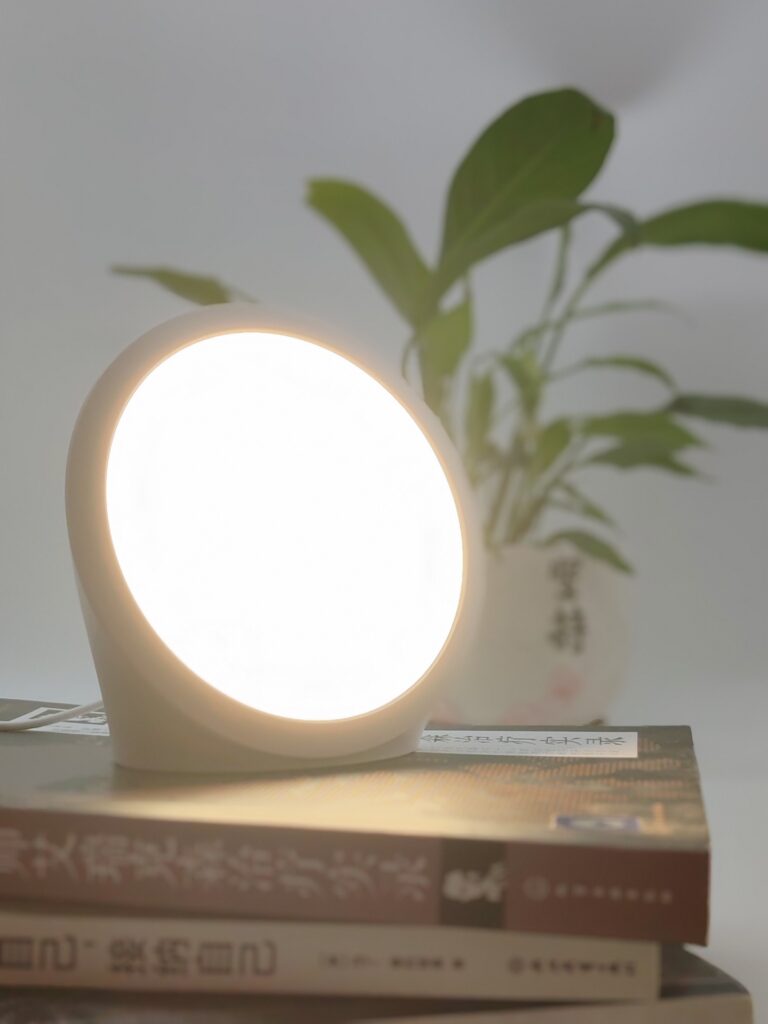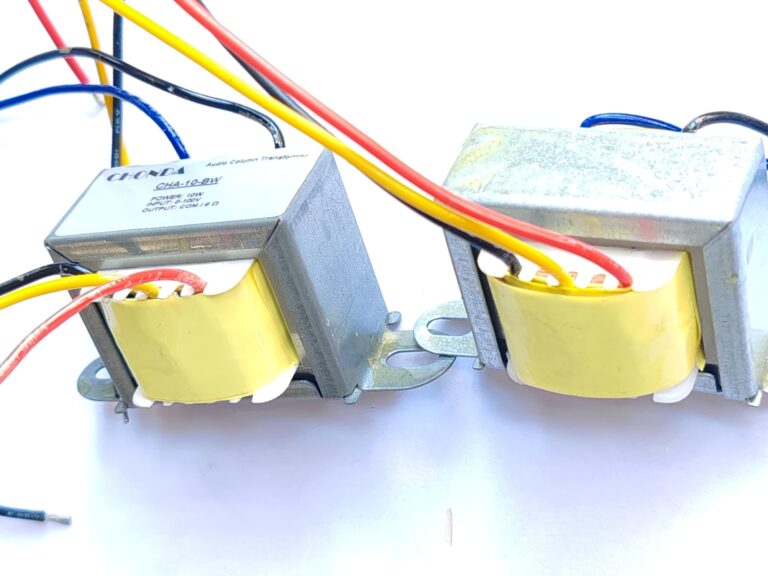We help the world since 2012

Audio Isolation Transformer: Eliminate Buzzing and Improve Sound Quality
The Maddening Hum That Won’t Quit
It’s 2 AM. You’re staring at the recording software, trying to get that podcast done before the deadline. You hit “record,” ready to pour your creativity into the mic, and—BZZZZZT—there it is. That dreaded 60Hz hum. You’ve tried everything—new cables, swapped out the audio interface, even unplugged the fridge. Yet, the hum refuses to leave.
Sound familiar?
I’ve helped hundreds of audio engineers, podcasters, and musicians solve this exact problem. One thing I know for sure: 90% of these mysterious noises are caused by ground loops, and guess what? An audio isolation transformer is the secret weapon to put an end to it. If you’re new to using an audio isolation transformer, don’t worry—I’ll walk you through how it works and how to choose the right one for your setup.
But choosing the right audio isolation transformer can feel overwhelming. With so many models, specs, and brands out there, how do you know which one truly works? In this guide, I’ll break down what matters most—so you don’t waste time or money. And if you’re looking for a proven solution, I’ll also show you why our CHA-10-BW model has become a favorite among home studio professionals.
Chapter 1: What Is an Audio Isolation Transformer? (And Why You Probably Need One)
Imagine your audio signal as a crystal-clear glass of water. But when ground loops or electrical interference show up, it’s like someone dumps dirt into that water. The isolation transformer acts as a filter, letting the clean water (your audio) pass through while blocking out the dirt (the noise).
Here’s how it works:
- Physically separates input and output circuits
- Blocks DC voltage and ground noise
- Passes only AC audio signals, untouched
Signs You Need One Right Now
Do you notice any of the following?
- The hum changes when you touch metal parts of your gear
- The noise disappears when you run your setup on battery power
- You hear radio stations or Wi-Fi interference in your monitors
Real-World Example
Take Sarah, a voiceover artist. She was ready to throw in the towel on a big audiobook project because of a constant buzzing sound that just wouldn’t go away. After trying everything else, she bought the CHA-10-BW isolation transformer. Within minutes, the hum was gone, and her audio was pristine. Sarah laughed, saying, “I wish I had tried this sooner!”
Chapter 2: Choosing Your Transformer—The Smart Way
Mistake #1: Buying the Wrong Power Rating
Let’s face it: choosing the right transformer isn’t as simple as picking one that fits your gear. If your transformer’s power rating is too low, your system won’t get the clean audio it needs. Too high, and you might lose clarity in your high frequencies.
Here’s the rule of thumb: Your transformer should handle at least 1.5x your system’s max power.
| Your Gear | Minimum Transformer |
|---|---|
| USB mic + desktop speakers | 10W (like the CHA-10-BW) |
| Home studio with monitors | 30W |
| Small live PA system | 100W |
Pro Tip: Bigger isn’t always better. If you over-power your system, you might end up muddying the high frequencies. It’s all about balance!
Mistake #2: Ignoring Impedance
Mistake #2: Ignoring Impedance
Impedance matters, especially when you’re working with different gear. Most home setups need:
- 8Ω output for standard speakers
- 70V/100V input for commercial PA systems
Our CHA-10-BW comes with 8Ω output and easy screw terminals for custom wiring, making it the ideal choice for home studios.
Mistake #3: Choosing the Wrong Core Type
Not all cores are created equal. Here’s a quick breakdown:
| Core Type | Best For | Price | Lifespan |
|---|---|---|---|
| EI-Core | Home studios, podcasts | $ | 5-7 years |
| C-Core | Professional recording setups | $$$ | 10-15 years |
For 95% of home users, EI-core (like in our CHA-10-BW) is perfect. Save the C-core for million-dollar studios!
Chapter 3: Installation Secrets the Pros Use
Where to Place It (The Golden Rule)
Here’s the secret: always place the transformer as close to the noise source as possible. For most setups, that means:
- Between your mixer and powered speakers
- After the audio interface outputs
- Before amplifier inputs
And one more thing: Never stack it on hot equipment! Transformers need space to breathe, so make sure it has enough airflow.
The 5-Minute Fix
Not sure if an isolation transformer will fix your buzzing problem? Try this:
- Unplug all audio gear
- Connect the transformer between the buzzing components
- Power on sequentially: source → transformer → speakers
- Sit back and listen for the sweet sound of silence
Chapter 4: Real-World Success Stories
Case Study #1: The Podcast That Almost Failed
- Problem: A podcast’s interviews sounded “underwater” due to a persistent hum.
- Solution: Placing a CHA-10-BW between the interface and headphone amp.
- Result: Clear, crisp audio and 30% fewer editing hours.
Case Study #2: Church Sound System Nightmare
- Problem: A church experienced a 60Hz drone during quiet prayers, which was distracting for the congregation.
- Solution: Installed three CHA-10-BW units at key signal points.
- Result: “The congregation actually noticed the difference,” said Pastor Mike. The church’s audio is now crystal-clear.
Chapter 5: Your Next Steps
Still feeling uncertain? Don’t worry—getting your system humming perfectly is just a few steps away.
- Download our free troubleshooting checklist
- Watch our 7-minute installation video
- Send me a photo of your setup—I’ll personally advise you
Why Choose Our CHA-10-BW?
- Proven in over 1,000 installations
- Lifetime warranty (because we stand behind our products)
- Includes step-by-step wiring diagrams for hassle-free installation
Final Thought
That persistent hum or buzz isn’t just an annoyance—it’s a technical flaw that compromises audio integrity in professional environments. Whether you’re managing a broadcast studio, live sound reinforcement, or installed AV systems, the right isolation transformer ensures clean signal transmission without introducing noise or distortion.
Unlike consumer-grade solutions, professional audio isolation requires precision engineering—proper impedance matching, robust power handling, and reliable noise rejection. That’s why our CHONDA CHA Series is trusted by broadcast engineers, system integrators, and AV professionals worldwide.
Ready to eliminate noise from your signal chain?
[Contact our technical team] for application-specific recommendations or [download our pro installation guide]. Because in professional audio, clarity isn’t optional—it’s essential.
FAQs About Audio Isolation Transformers
❓ Can an audio transformer remove ground loop hum?
✅ Yes. An audio isolation transformer effectively removes ground loop hum by breaking the direct electrical path between audio devices. This prevents unwanted electrical currents from flowing through the ground, which are often the cause of buzzing or humming sounds in the system.
❓ What’s the difference between 1:1 and step-down transformers?
✅ 1:1 transformers maintain the same voltage on both the input and output. These are typically used to isolate the audio signal and eliminate noise, without altering the signal level.
✅ Step-down transformers, as the name suggests, reduce the voltage from the input side to the output side. These are useful when you need to adapt signal levels between devices with different voltage requirements.
❓ How do I choose the right audio isolation transformer for my setup?
✅ When selecting an audio isolation transformer, consider factors like impedance matching, frequency response, and current handling capacity. It’s also important to choose a transformer that matches the power requirements of your audio equipment to ensure optimal performance without distortion.
❓ Can I use an isolation transformer with home theater systems?
✅ Absolutely! Audio isolation transformers are not only for professional setups. They can also be used with home theater systems to eliminate hum, buzz, and ground loop issues, especially when using multiple audio devices with different power sources.
❓ What other issues can an isolation transformer solve?
✅ Besides hum and buzz, isolation transformers can also prevent electrical interference from nearby devices, helping to deliver a cleaner, more stable audio signal. This is particularly helpful in environments with high electromagnetic interference (EMI), like industrial areas or recording studios.




